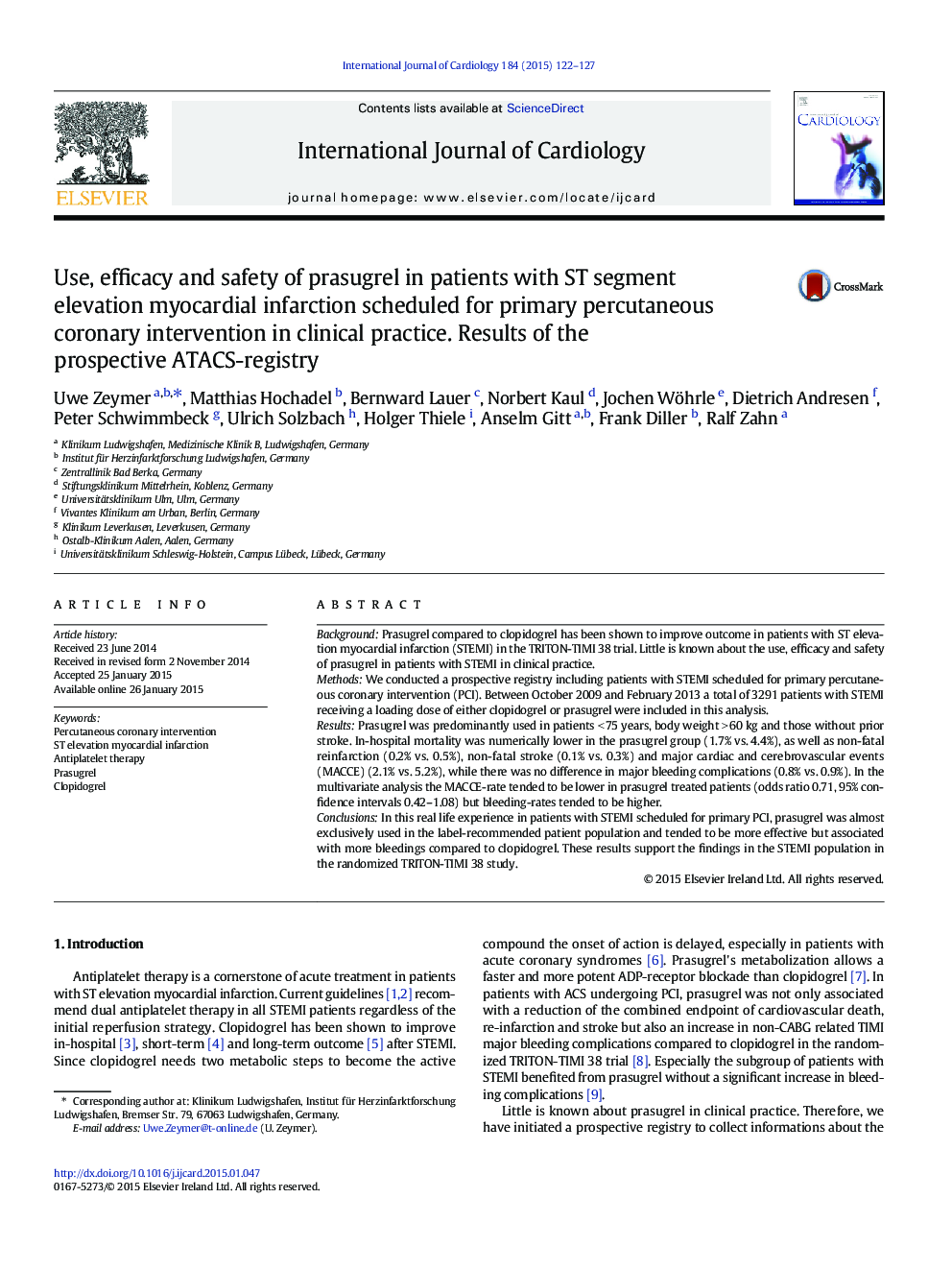| Article ID | Journal | Published Year | Pages | File Type |
|---|---|---|---|---|
| 5968308 | International Journal of Cardiology | 2015 | 6 Pages |
â¢Between October 2009 and February 2013 a total of 3291 patients with STEMI receiving a loading dose of either clopidogrel or prasugrel were included in this analysis.â¢Prasugrel was predominantly used in patients < 75 years, body weight > 60 kg and those without prior stroke.â¢In-hospital mortality was numerically lower in the prasugrel group (1.7 % vs. 4.4 %), and major cardiac and cerebrovascular events (MACCE) (2.1 % vs. 5.2 %), while there was no difference in major bleeding complications (0.8% vs. 0.9%).â¢In the multivariate analysis the MACCE-rate tended to be lower in prasugrel treated patients (odds ratio 0.71, 95 % confidence intervals 0.42-1.08) but bleeding-rates tended to be higher (odds ratio 1.89, 95 % confidence intervals 0.66-5.41).
BackgroundPrasugrel compared to clopidogrel has been shown to improve outcome in patients with ST elevation myocardial infarction (STEMI) in the TRITON-TIMI 38 trial. Little is known about the use, efficacy and safety of prasugrel in patients with STEMI in clinical practice.MethodsWe conducted a prospective registry including patients with STEMI scheduled for primary percutaneous coronary intervention (PCI). Between October 2009 and February 2013 a total of 3291 patients with STEMI receiving a loading dose of either clopidogrel or prasugrel were included in this analysis.ResultsPrasugrel was predominantly used in patients <Â 75Â years, body weight >Â 60Â kg and those without prior stroke. In-hospital mortality was numerically lower in the prasugrel group (1.7% vs. 4.4%), as well as non-fatal reinfarction (0.2% vs. 0.5%), non-fatal stroke (0.1% vs. 0.3%) and major cardiac and cerebrovascular events (MACCE) (2.1% vs. 5.2%), while there was no difference in major bleeding complications (0.8% vs. 0.9%). In the multivariate analysis the MACCE-rate tended to be lower in prasugrel treated patients (odds ratio 0.71, 95% confidence intervals 0.42-1.08) but bleeding-rates tended to be higher.ConclusionsIn this real life experience in patients with STEMI scheduled for primary PCI, prasugrel was almost exclusively used in the label-recommended patient population and tended to be more effective but associated with more bleedings compared to clopidogrel. These results support the findings in the STEMI population in the randomized TRITON-TIMI 38 study.
